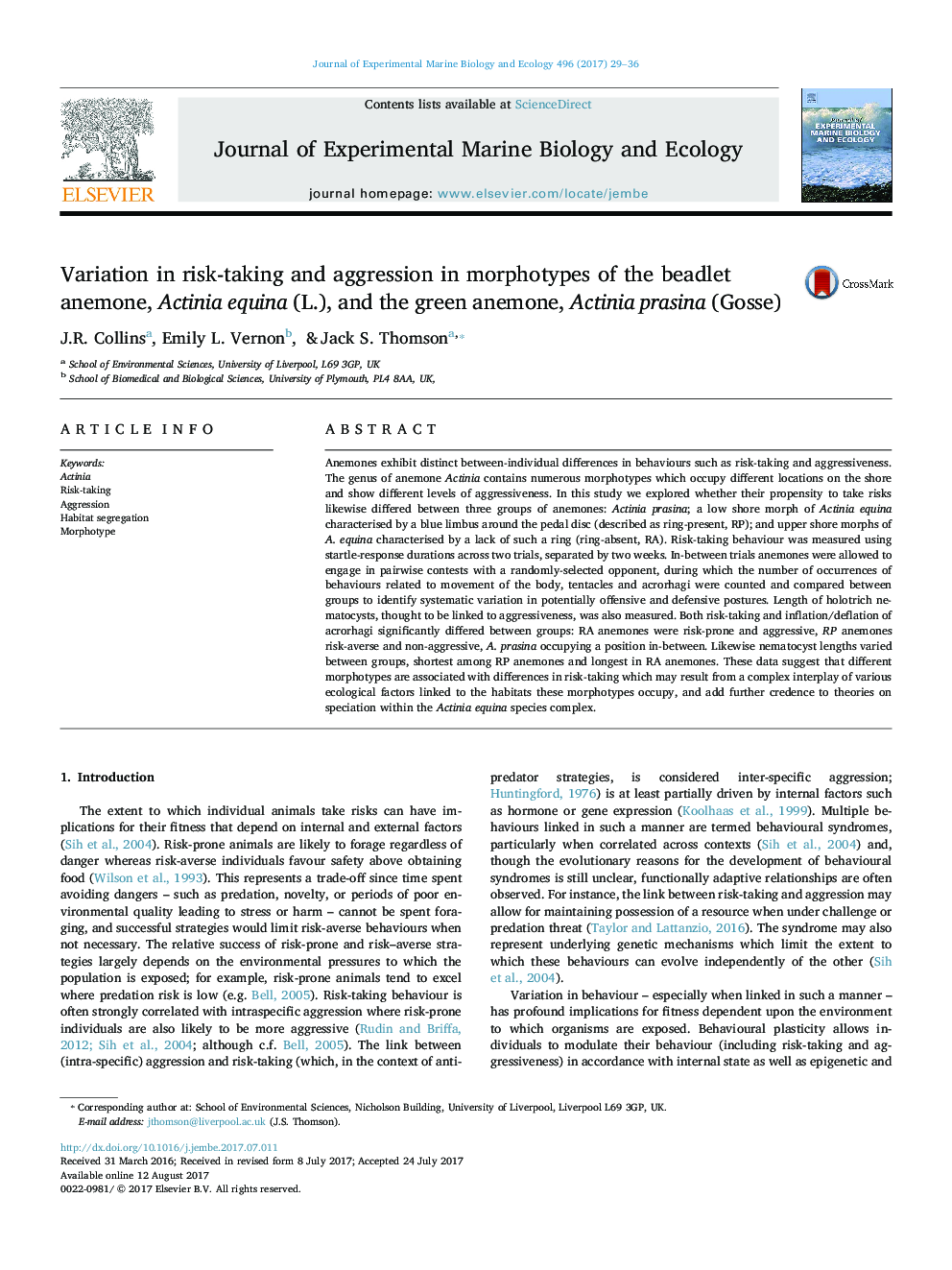| Article ID | Journal | Published Year | Pages | File Type |
|---|---|---|---|---|
| 5744537 | Journal of Experimental Marine Biology and Ecology | 2017 | 8 Pages |
â¢Actinia morphs occupy different intertidal positions exposed to varying conditions.â¢Morphs show differences in aggression; risk-taking may also vary with environment.â¢Morphs diverged consistently in both risk-taking behaviour and aggressiveness.â¢Behaviour likely reflects complex mechanics of environmental and social challenges.
Anemones exhibit distinct between-individual differences in behaviours such as risk-taking and aggressiveness. The genus of anemone Actinia contains numerous morphotypes which occupy different locations on the shore and show different levels of aggressiveness. In this study we explored whether their propensity to take risks likewise differed between three groups of anemones: Actinia prasina; a low shore morph of Actinia equina characterised by a blue limbus around the pedal disc (described as ring-present, RP); and upper shore morphs of A. equina characterised by a lack of such a ring (ring-absent, RA). Risk-taking behaviour was measured using startle-response durations across two trials, separated by two weeks. In-between trials anemones were allowed to engage in pairwise contests with a randomly-selected opponent, during which the number of occurrences of behaviours related to movement of the body, tentacles and acrorhagi were counted and compared between groups to identify systematic variation in potentially offensive and defensive postures. Length of holotrich nematocysts, thought to be linked to aggressiveness, was also measured. Both risk-taking and inflation/deflation of acrorhagi significantly differed between groups: RA anemones were risk-prone and aggressive, RP anemones risk-averse and non-aggressive, A. prasina occupying a position in-between. Likewise nematocyst lengths varied between groups, shortest among RP anemones and longest in RA anemones. These data suggest that different morphotypes are associated with differences in risk-taking which may result from a complex interplay of various ecological factors linked to the habitats these morphotypes occupy, and add further credence to theories on speciation within the Actinia equina species complex.
